![]()
![]()
![]()
Use LEFT and RIGHT arrow keys to navigate between flashcards;
Use UP and DOWN arrow keys to flip the card;
H to show hint;
A reads text to speech;
20 Cards in this Set
- Front
- Back
|
3 body cavities
|
Thoracic
Abdominal Pelvic |
|
|
Viscera
|
Organs found in the body cavities
Visceral systems are found mainly in the body cavities eg: digestive system and respiratory system |
|
|
Serous membranes
|
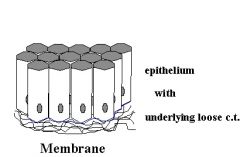
Line the body cavities to form sacks.
Made up of 2 layers |
|
|
Thoracic cavity
Pleura/pleural membranes |
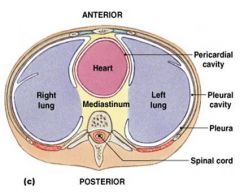
The serous membranes are called the pleural membranes/pleura. These bound the pleural cavities
Most organs in the thorax are found in the mediastinum Eg: heart and major blood vessels Lungs push laterally outwards from mediastinum-reducing reducing size of pleural cavities |
|
|
Parietal pleura
|
Forms the walls of the pleural cavities. It is divided further into costal(ribs), mediastinal and diaphragmatic pleura
|
|
|
Pulmonary pleura
|
Visceral portion of the pleura which tightly adheres to the surface of the lungs and follows all their irregularities
|
|
|
Abdominal and pelvic cavities
Peritoneum |
Both lined by one sack
Serous membrane is called the peritoneum and this lines the peritoneal cavity |
|
|
Abdominal and pelvic cavities
Viscera |
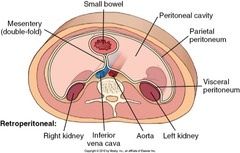
Viscera lie in a fold of the peritoneum formed from the dorsal surface. There are several organs coated in peritoneum. The peritoneal cavity is thus decreased in size-filled only with a small amount of serous fluid for lubrication
|
|
|
Parietal peritoneum
|
Covers the inner walls of the abdominal and pelvic cavities
|
|
|
Visceral peritoneum
|
Covers the organs of the abdominal and pelvic cavities. It is also called serosa, with the name of the organ covered first eg : pancreatic serosa, hepatic serosa
|
|
|
Connecting peritoneum
|
Consists of double sheets of peritoneum extending between organs or connecting them to the parietal peritoneum
|
|
|
3 types of connecting peritoneum
Mesentery |
Specifically passes from the abdominal wall to the intestine.
Wide and contains many vessels (Wide serous fold which attaches organs to a wall and serves as a rote for nerves and vessels to reach the organs) |
|
|
Connecting peritoneum
Omentum |
Passes from the stomach to other organs or to the wall eg: the greater omentum over the stomach
|
|
|
Connecting peritoneum
Ligament |
Passes from the abdominal wall to an organ or from an organ to another organ and is usually narrow and contains few vessels eg: ovarian ligament
|
|
|
Intraperitoneal
|
Most organs in the abdominal and pelvic cavities are found projecting freely into the cavities and have an almost total covering of peritoneum.
|
|
|
Retroperitoneal
|
Organs which lie against the body walls and are only covered on one surface by peritoneum - usually small and embedded in fat eg: kidneys
|
|
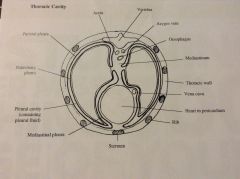
Thoracic cavity
|
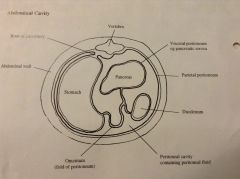
Abdominal cavity
|
|
|
Thoracic cavity boundaries
|
Cranial thoracic aperture
Thoracic vertebrae Diaphragm Ribs Sternum |
|
|
Abdominal cavity boundaries
|
Diaphragm
Lumbar vertebrae Pelvic aperture Muscles of abdominal wall |
|
|
Pelvic cavity boundaries
|
Pelvic aperture
Sacrum and first few coccygeal vertebrae Caudal pelvic aperture Pelvic bones-pubis and ischium |

